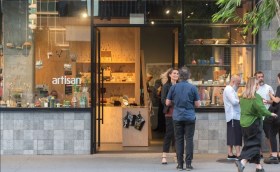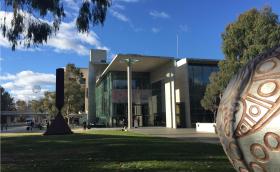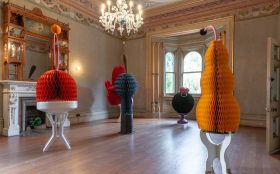With three attacks on artistic freedom over the past three weeks, young artists are coming of age in Australia with genuine fears of censorship or even jail.
This week Sydney Contemporary banned an installation by artist Paul Yore accusing him of breaching the Crimes Act. Just two days earlier photographer Bill Henson withdrew from the Adelaide Biennial after attacks in the media including a call by a police officer for the SA Premier Jay Wetherall to intervene to prevent Henson exhibiting. And earlier this month Yore was charged with child pornography in Victoria over an installation that had been seized from Linden Gallery in Melbourne.
For young artists exploring the transgressive territory of sex, death and bodily fluids, the events of the past month are a stark lesson that artistic freedom cannot be assumed. Many in the art scene are asking the question: How would my work hold up if placed under the microscope?
Melbourne artist Emily Hasselhoof, 31, who creates colourful character-based works with the occasional illicit counterpoint, as in the animation below, is a little nervous about the environment of suppression that is emerging within the art scene.
‘Sometimes I like drawing things that are a little bit terrifying, like dogs vomiting on a unicorn. I also might draw things that are seemingly quite sexual,’ said Hasselhoof.
After Yore was officially charged, Hasselhoof was left wondering how far was too far. ‘What if they look up my art and I go to jail?’ said Hasselhoof.
As someone who has exhibited through Asia and Europe and witnessed highly confronting art, Hasselhoof is left feeling like she is standing on shaky ground. With reference to Yore’s work: ‘If that’s too much for them then half the art world should be in jail.’
She is also suspicious of the motivations behind the charges. ‘Is this them (the government) cracking down on art? I mean, art can be misinterpreted. It’s a scary idea.’
Another thirty-something artist, Yuka Harte is owner and curator of Discobeans café and gallery, a venue that originated in Osaka, Japan before relocating to Northcote in Melbourne. Harte is also surprised and worried about the Yore incident. ‘In Japan I would show pretty underground and hardcore kind of art, but here it’s much more conservative,’ she said.
Video by Sekitani, an Osaka-based artist, whose work was regularly shown in Discobeans Japan.
The fact that some of the art she has exhibited could be considered illegal is shocking to Harte. It is only her venue’s non-central whereabouts that makes her rest a little more easily. ‘Our location is pretty local, in the suburbs, so I’m not too worried … But after this news it’s a little scary.’
Brisbane artist Kat Martin, 33, is another artist feeling affected by the charging and censorship of Yore. Martin’s work is a combination of borrowed imagery, reinvention and juxtaposition to explore colour, shape and motion. She is interested in the value things have outside of their intended purposes, addressing concepts relating to throw away culture and mass desires usually considered cultureless.
‘I do occasionally use sexual imagery but usually only incidentally, fleetingly, and only once as overt content. I usually approach it with reference to yob objectification of women and my appraisal of it is generally lowbrow, base level, lowest common denominator status. I do identify with issues of the female gender and though I do not address it in my daily practice, I would resent if I could not explore these issues satisfyingly,’ said Martin.
By removing an artwork from its context it can be manipulated into someone else’s perspective. Martin reflects on Yore’s work: ‘I saw it as an obvious response to the media, especially the music industry, about it’s proliferation of the sexualisation and adultification of children.’ After the connection of Yore’s work to child pornography Martin is more apprehensive about the people that laid the charges rather than the artist himself.
She is also left nervous about the art left unquestioned; what she views as boring, unstimulating work with minimal slick design.
But fear is not the only response that is infiltrating the thoughts of young artists. They have not missed the fact that Yore, who is only 25, has been catapulted into a notoriety that has also assured him the attention of potential audiences.Martin has come to a rueful conclusion. ‘This kind of cock up makes me realise that Paul Yore (whom I’d never actually heard of before this but now like) will be so famous now that possibly I should explore more of the perverse and potentially offensive in my work.’
(Image: Emily Hasselhoof’s ‘Colour Song’ [cropped])






